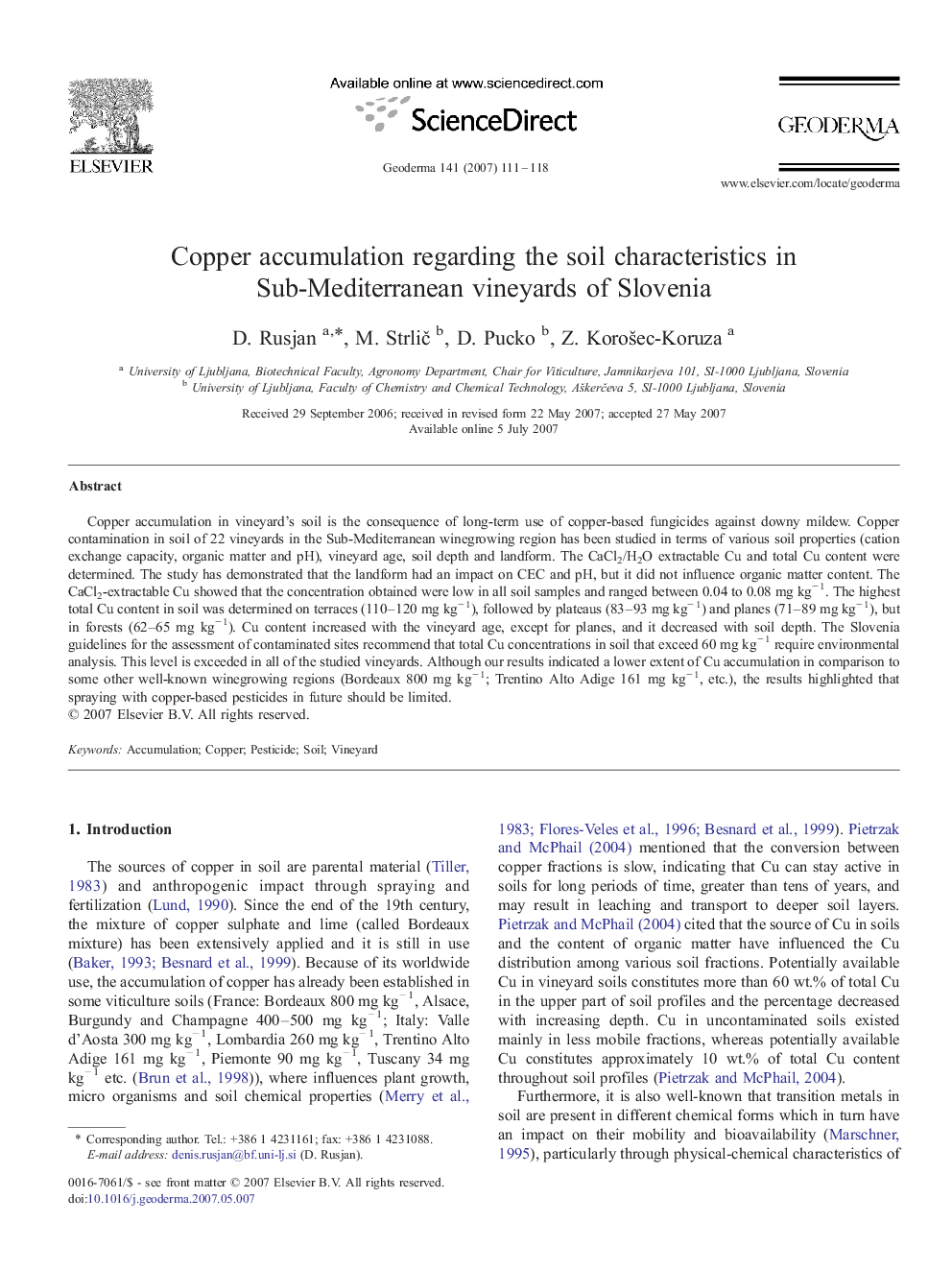| Article ID | Journal | Published Year | Pages | File Type |
|---|---|---|---|---|
| 4575091 | Geoderma | 2007 | 8 Pages |
Copper accumulation in vineyard's soil is the consequence of long-term use of copper-based fungicides against downy mildew. Copper contamination in soil of 22 vineyards in the Sub-Mediterranean winegrowing region has been studied in terms of various soil properties (cation exchange capacity, organic matter and pH), vineyard age, soil depth and landform. The CaCl2/H2O extractable Cu and total Cu content were determined. The study has demonstrated that the landform had an impact on CEC and pH, but it did not influence organic matter content. The CaCl2-extractable Cu showed that the concentration obtained were low in all soil samples and ranged between 0.04 to 0.08 mg kg− 1. The highest total Cu content in soil was determined on terraces (110–120 mg kg− 1), followed by plateaus (83–93 mg kg− 1) and planes (71–89 mg kg− 1), but in forests (62–65 mg kg− 1). Cu content increased with the vineyard age, except for planes, and it decreased with soil depth. The Slovenia guidelines for the assessment of contaminated sites recommend that total Cu concentrations in soil that exceed 60 mg kg− 1 require environmental analysis. This level is exceeded in all of the studied vineyards. Although our results indicated a lower extent of Cu accumulation in comparison to some other well-known winegrowing regions (Bordeaux 800 mg kg− 1; Trentino Alto Adige 161 mg kg− 1, etc.), the results highlighted that spraying with copper-based pesticides in future should be limited.
